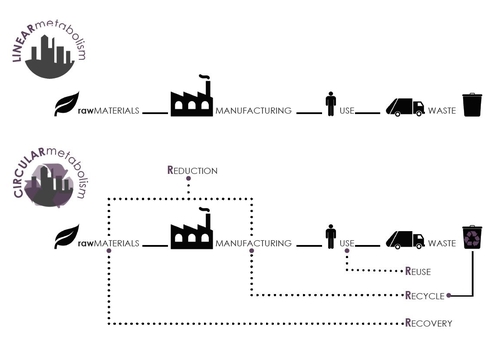Have you ever wonder how do the flows of goods, waste, energy, people, water and air function in your city? What influence do these flows have on the quality of our life, how do they affect us?
C. Kennedy and fellow researchers have produced a clear definition in the 2007 paper ‘’The Changing Metabolism of Cities’’ calling “the sum total of the technical and socio-economic process that occur in cities, resulting in growth, production of energy and elimination of waste” as urban metabolism. These flows and the relationship between the anthropogenic urban activities and the natural processes define the urban production and consumption by transforming the resources into vital functions for the city.
Ultimately, urban metabolism is a powerful metaphor that helps us think about the man-made environment in a completely different way, which feels less judgmental than certain other perspectives. All cities, like all nature’s organisms, have a definable metabolism: in order to satisfy their needs they need to produce waste.
But what does a natural ecosystem do differently than the man-made world that surrounds us? The main difference lies on the fact that nature essentially has a circular zero-waste metabolism where every output by an organism is also an input which replenishes and sustains the whole living environment. In contrast, the metabolism of many modern cities is essentially linear, with resources flowing through the urban system without much concern about their origin or the destination of wastes. Inputs and outputs are considered as largely unrelated.
As Herbert Girardet says, in order for cities to become more sustainable they must change the linear to a more circular metabolism, creating a self-regulating sustainable relationship with the biosphere. Therefore, the challenge of today is to create sustainable cities, truly regenerative. “A sustainable city […] is a city where achievements in social, economic, and physical development are made to last. A sustainable city has a lasting supply of the natural resources on which its development depends (using them only at a level of sustainable yield). A sustainable city maintains a lasting security from environmental hazards which may threaten development achievements (allowing only for acceptable risk).”[1]A regenerative city, though, is not just resource-efficient and low carbon emitting, but it positively enhances rather than undermines the ecosystem services it receives from beyond its boundaries.
A wide range of technical and management solutions towards this end are already available, but so far implementation has been too slow and too little. It is us, as citizens, that we need to manage these processes in a sensitive, informed way, playing a key role to the overall function of our city. Most importantly, though, these transformative changes that are required to make our cities regenerative call for state-led policy based on far reaching strategic choices and long-term planning as compared to the short-term compromises and solutions that characterize most of the current political made decisions.
Diagrams depicting an Urban Linear Metabolism and an Urban Circular Metabolism - source: SWAT studio, Architecture and the Built Environment, Building Technology track, team A2
http://www.urbanmetabolism.org/
https://nextcity.org/daily/entry/what-is-urban-metabolism-defined-science-cities
[1]UN Habitat, UNHCS/UNHSP (United Nations Human Settlements Programme)
